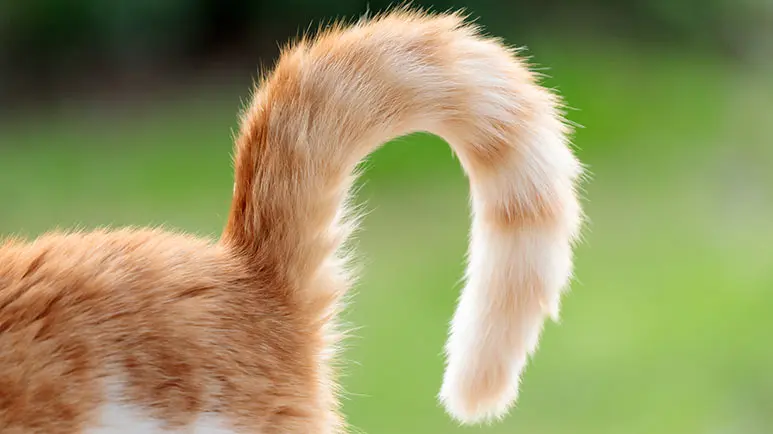The Silent Messages Cats Send With Their Tails
What's your kitty telling you when her tail shoots up straight and quivers? How about when it forms a question mark? Understand your cat on a deeper level and know her temperament, emotions, and needs, simply by studying how she moves her tail.

STORY AT-A-GLANCE
- When your cat’s tail is held high, he’s feeling cheerful. If it quivers as well, he may be excited and anticipating something good
- Kitties also show signs of nervousness or fear, detectable when their tails are held beneath them, or puffed up and furry
- The signs are usually clear when your cat is annoyed. A tail held low to the ground may indicate wariness or annoyance, which can move quickly to aggression. If it begins lashing back and forth, watch out
Editor's Note: This article is a reprint. It was originally published January 03, 2015.
Some say cats are inscrutable. While that may be true, here are a few tips to help you interpret signals your kitty’s tail can reveal:
- Tail standing straight up and quivering — If you’ve spent much time watching your cat, you’ve seen it — a tail that stands straight up and quivers. This is a sign your feline is feeling fine and experiencing anticipation, pleasure, or excitement. You may notice this when he’s caught a mouse, or hears the familiar sound of the can opener humming, meaning dinner’s on the way.
- Straight up tail — A cat who’s feeling confident, comfortable, and content holds his tail high and straight.
- Tall tail with a question mark — You may notice your cat’s tail standing tall with a slight curve on the end, like a question mark. This means your cat is feeling playful and ready for human interaction and communication — one of the reasons why kitties make such great pets.
- Tail tucked underneath — When your cat sees or hears something alarming or frightening, he may begin acting strange or automatically try to make himself look smaller. This usually means he tucks his tail, literally, between his legs.
- Puffy tail — When your cat is frightened, she will puff up her tail, sometimes to three times its usual size, which can be impressive if it’s a long-haired breed! Often this is accompanied by an arched back and extended ears — the stance cats of all sizes take to appear larger to a potential attacker.
- Tail low to the ground — Cats feeling threatened by something in their environment may place their tails low to the ground. If you notice your cat looking wary with its tail in this position, understand the behavior may quickly progress from uncertainty to aggression.
- Tail lashing rapidly back and forth — If you see your cat’s tail whipping back and forth or thumping the floor, it’s a sure sign of irritation. Recognize this stance as a warning — before he lashes out — that your sweet kitty may be preparing to take on whatever is getting on his nerves.
- Tail gently swishing from side to side — This move shows how focused cats can be as they wait for just the right moment to pounce! The prey they’re intent upon is something they find tantalizing, like a bird through the window or their favorite catnip-stuffed toy … before curling up for a nap, of course.
Cats are mysterious, adorable creatures. Once you learn to recognize their silent signals, you’ll find yourself understanding your furry feline on a deeper level, and be able to better anticipate her temperament, emotions, and needs.
Sources and References
- PawNation.com January 15, 2014











